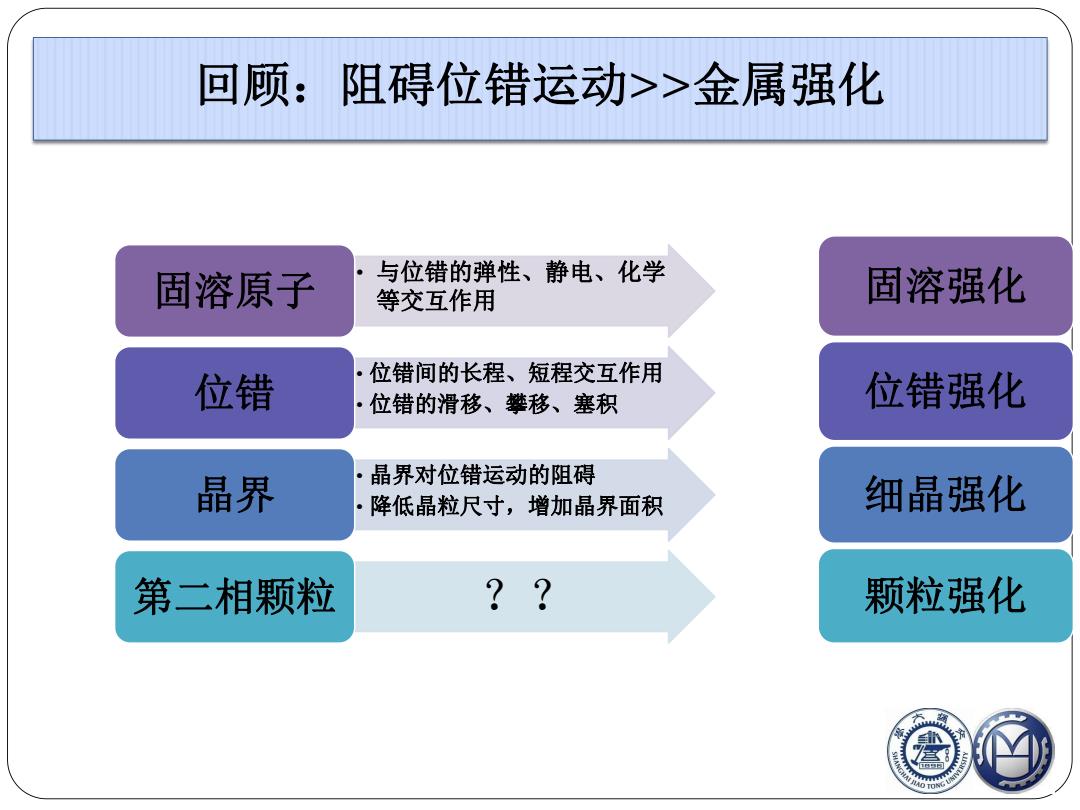
回顾:阻碍位错运动>>金属强化 固溶原子 与位错的弹性、静电、化学 等交互作用 固溶强化 位错 位错间的长程、短程交互作用 位错的滑移、攀移、塞积 位错强化 晶界 晶界对位错运动的阻碍 降低晶粒尺寸,增加晶界面积 细晶强化 第二相颗粒 ?? 颗粒强化
回顾:阻碍位错运动>>金属强化 • 与位错的弹性、静电、化学 固溶原子 等交互作用 • 位错间的长程、短程交互作用 位错 • 位错的滑移、攀移、塞积 • 晶界对位错运动的阻碍 晶界 • 降低晶粒尺寸,增加晶界面积 第二相颗粒 固溶强化 位错强化 细晶强化 ?? 颗粒强化
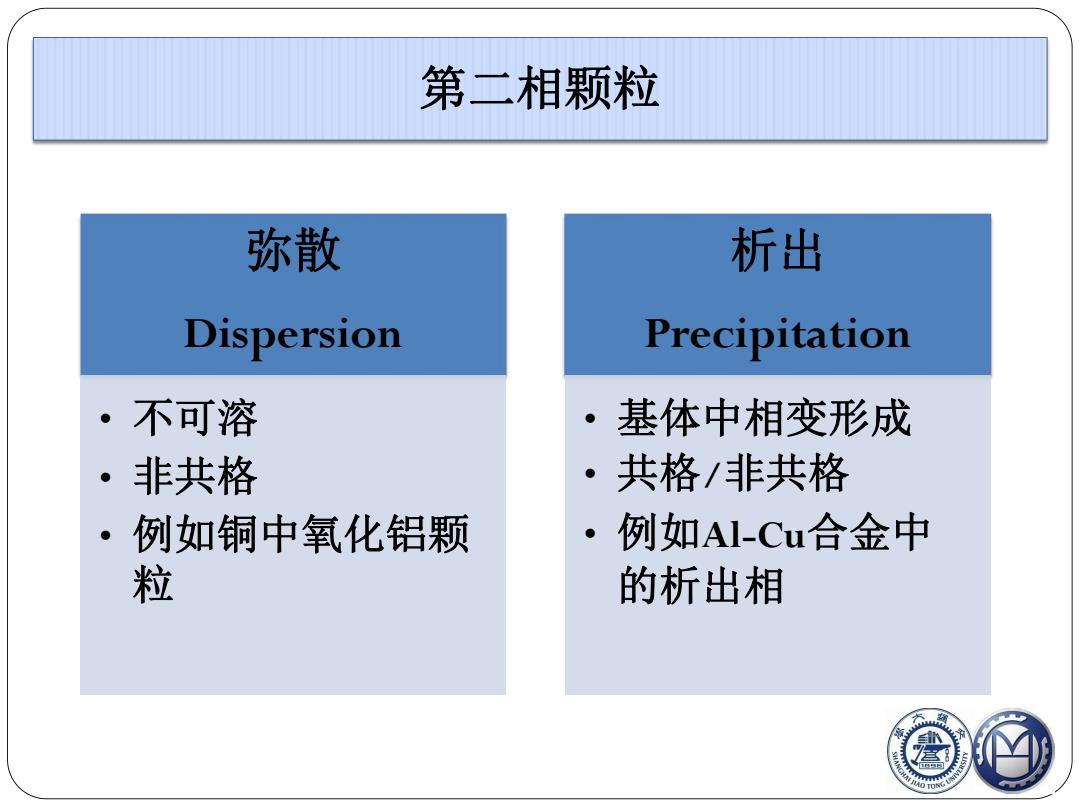
第二相颗粒 弥散 析出 Dispersion Precipitation 不可溶 基体中相变形成 。非共格 ·共格/非共格 例如铜中氧化铝颗 例如Al-Cu合金中 粒 的析出相
第二相颗粒 弥散 Dispersion • 不可溶 • 非共格 • 例如铜中氧化铝颗 粒 析出 Precipitation • 基体中相变形成 • 共格/非共格 • 例如Al-Cu合金中 的析出相
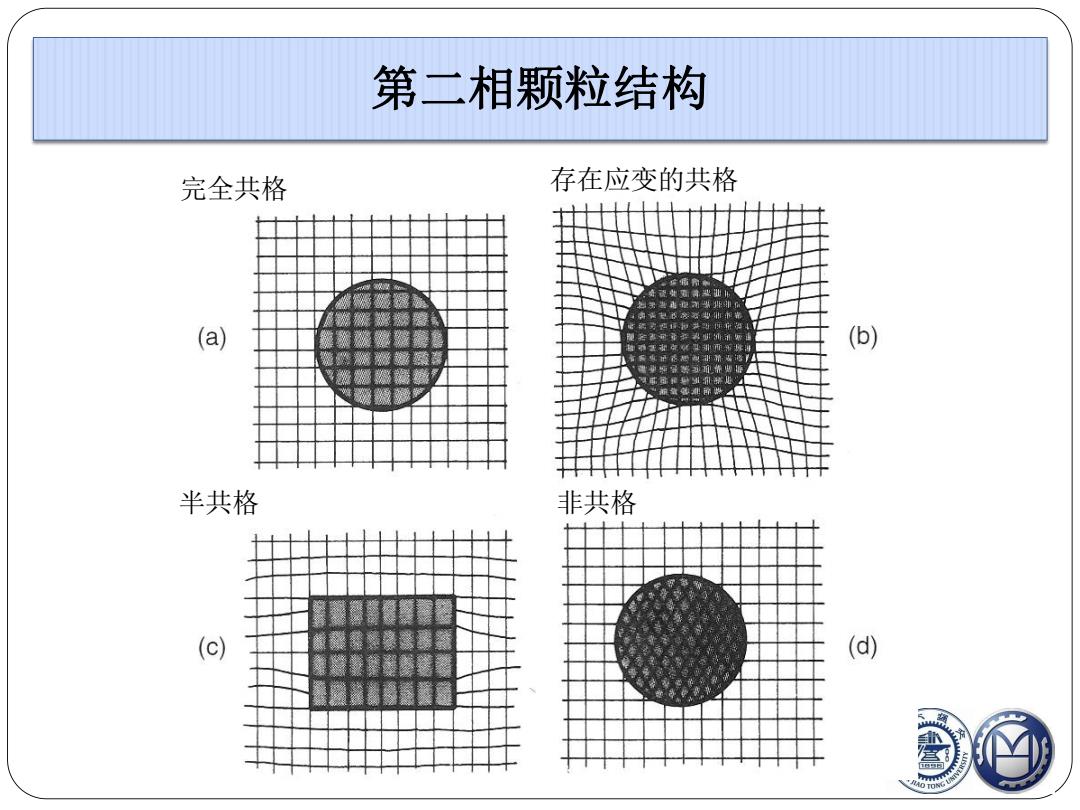
第二相颗粒结构 完全共格 存在应变的共格 (a) (b) 半共格 非共格 (c) (d)
完全共格 存在应变的共格 半共格 非共格 第二相颗粒结构

Precipitation Hardening Aluminum Alloys I Body:3104/3004-H19,3005-H18 alloy Lid:5052-H44,5182-H48 alloy Alloy Mn Mg YTS (MPa) UTS (MPa) Hardness(HB) Elong (% 3104 0.8-1.4 0.8-1.3 260 290 78 4 3005 0.2-0.6 1.0-1.5 225 240 65(4/4) 4 5052 2.2-2.8 214 262 68(1/2) 16
Precipitation Hardening & Aluminum Alloys I 5 Alloy Mn Mg YTS (MPa) UTS (MPa) Hardness (HB) Elong (%) 3104 0.8-1.4 0.8-1.3 260 290 78 4 3005 0.2-0.6 1.0-1.5 225 240 65 (4/4) 4 5052 - 2.2-2.8 214 262 68 (1/2) 16 Body: 3104/3004-H19, 3005-H18 alloy Lid : 5052-H44, 5182-H48 alloy
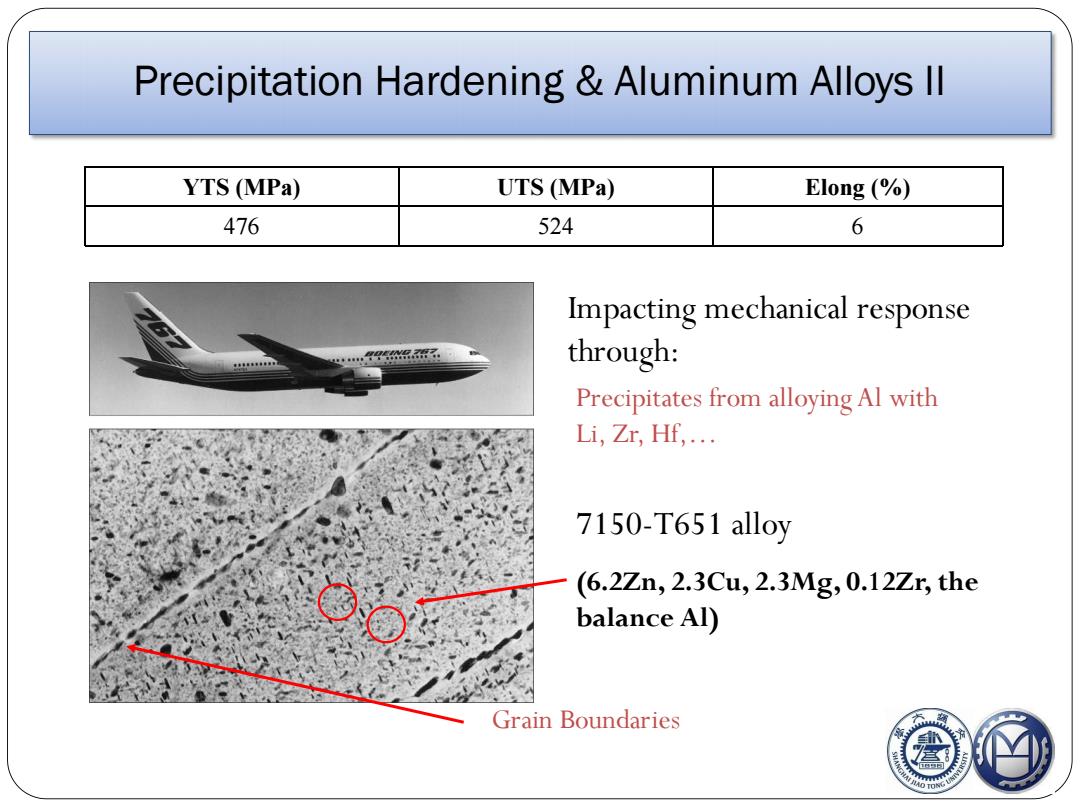
Precipitation Hardening Aluminum Alloys ll YTS (MPa) UTS (MPa) Elong (% 476 524 6 Impacting mechanical response …否 through: Precipitates from alloying Al with Li,Zr,Hf,... 7150-T651 alloy (6.2Zn,2.3Cu,2.3Mg,0.12Zr,the balance Al) Grain Boundaries
YTS (MPa) UTS (MPa) Elong (%) 476 524 6 6 Grain Boundaries Precipitates from alloyingAl with Li, Zr, Hf,… Impacting mechanical response through: 7150-T651 alloy (6.2Zn, 2.3Cu, 2.3Mg, 0.12Zr, the balance Al) Precipitation Hardening & Aluminum Alloys II
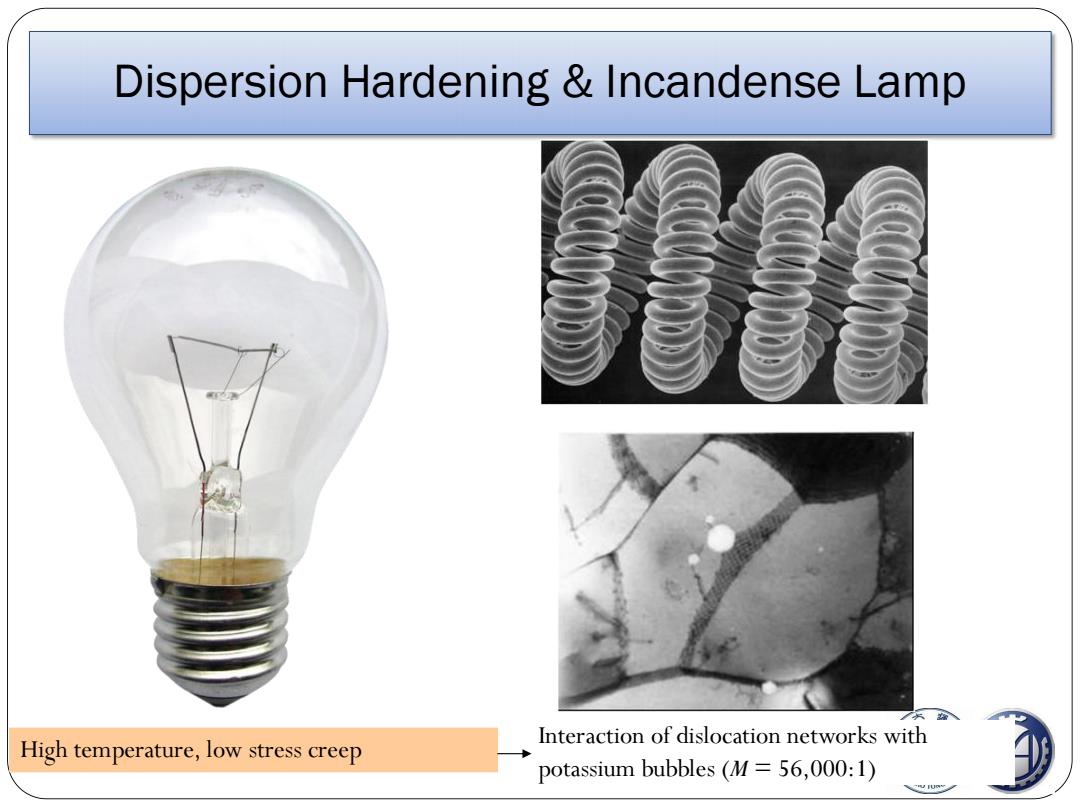
Dispersion Hardening Incandense Lamp High temperature,low stress creep Interaction of dislocation networks with potassium bubbles (M=56,000:1)
Dispersion Hardening & Incandense Lamp Interaction of dislocation networks with potassium bubbles (M = 56,000:1) High temperature, low stress creep
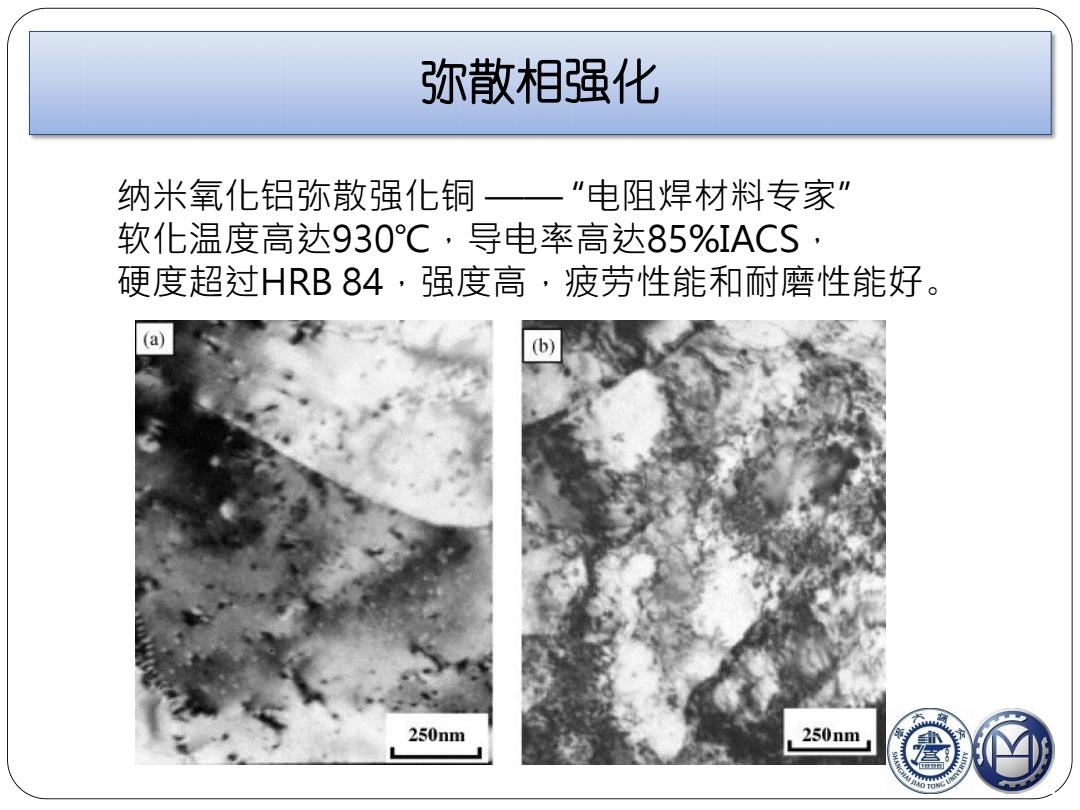
弥散相强化 纳米氧化铝弥散强化铜一“电阻焊材料专家” 软仁温度高达930°℃·导电率高达85%IACS, 硬度超过HRB84·强度高·疲劳性能和耐磨性能好。 (a) b 250nm 250nm
纳米氧化铝弥散强化铜 —— “电阻焊材料专家” 软化温度高达930℃,导电率高达85%IACS, 硬度超过HRB 84,强度高,疲劳性能和耐磨性能好。 弥散相强化
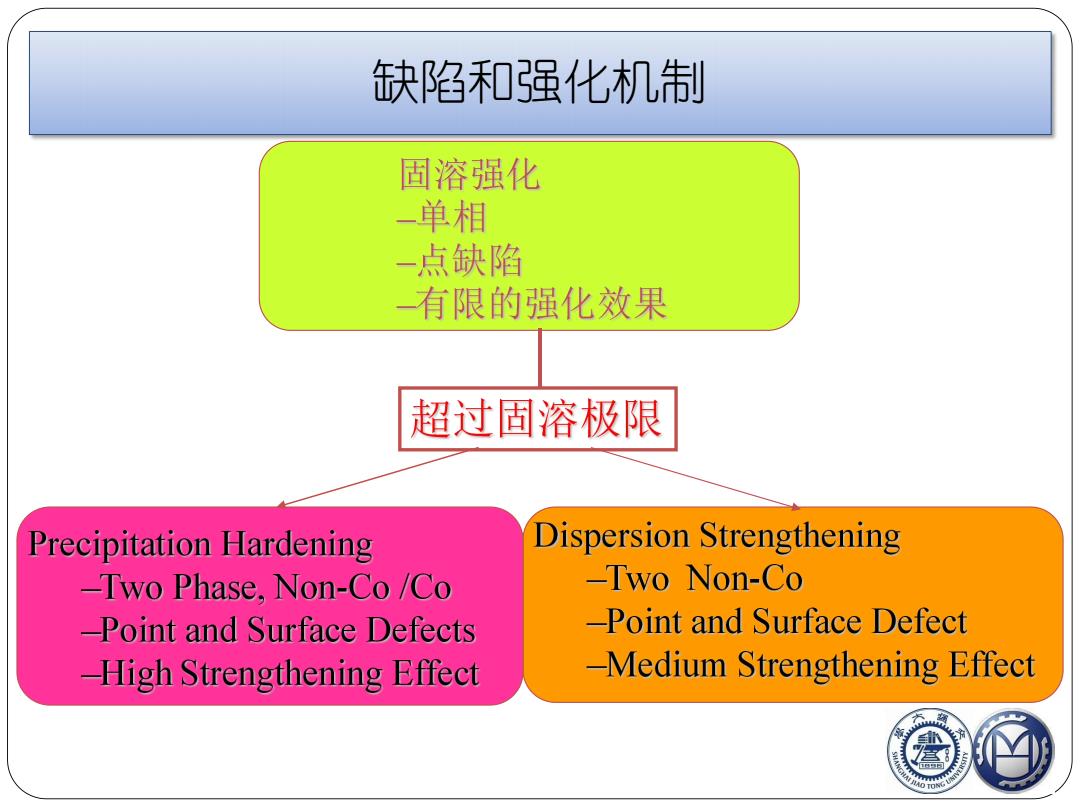
缺陷和强化机制 固溶强化 -单相 -点缺陷 有限的强化效果 超过固溶极限 Precipitation Hardening Dispersion Strengthening -Two Phase,Non-Co /Co -Two Non-Co -Point and Surface Defects -Point and Surface Defect -High Strengthening Effect -Medium Strengthening Effect
缺陷和强化机制 9
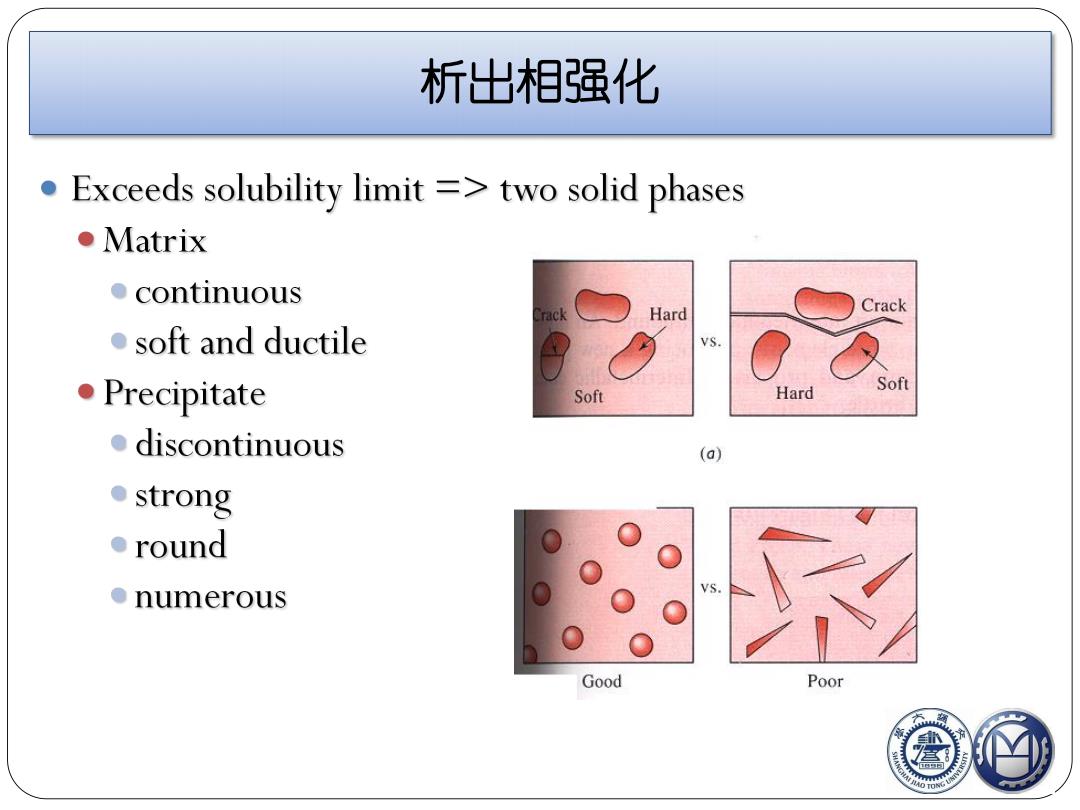
析出相强化 Exceeds solubility limit=>two solid phases Matrix ●continuous Hard Crack e soft and ductile VS. Precipitate Hard Soft Soft ●discontinuous (a) strong ●round ●numerous VS. Good Poor
析出相强化 10

位错颗粒切割机制 1.颗粒的共格应力场与位错的应力场之间产生 弹性交互作用,位错通过共格应变区时,会 产生一定的强化效应: 2.当颗粒的弹性切变模量高于基体时,位错进 Ar.=pin.r 入颗粒便增大位错自身的弹性畸变能,引起 位错的能量和线张力变大,位错运动遇到更 b6Ey 大的阻力: 3.第二相颗粒具有不同于基体的晶格常数,当 位错切过共格颗粒时,在滑移面上造成错配 的原子排列,因而增大位错运动的作功: Precipitate particle 4.位错切过颗粒后形成滑移台阶,增加界面能, 加大位错运动的能量消耗
V c b E f r 6 ~3/ 2 b Precipitate particle b 位错-颗粒切割机制